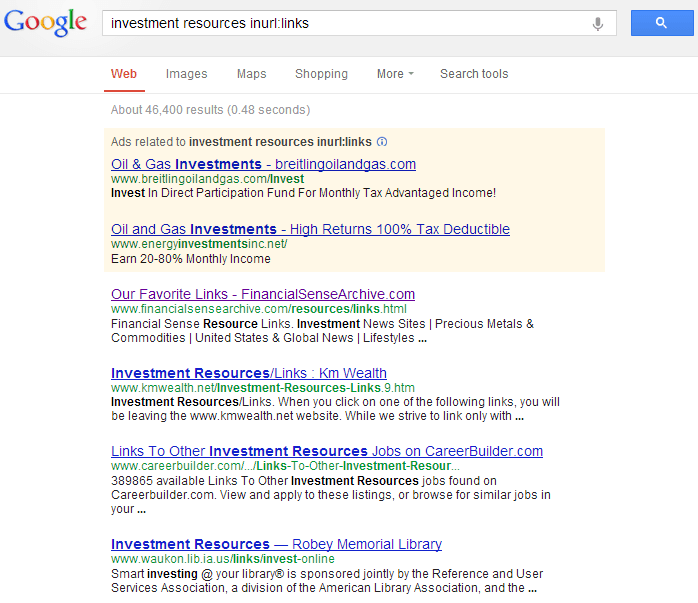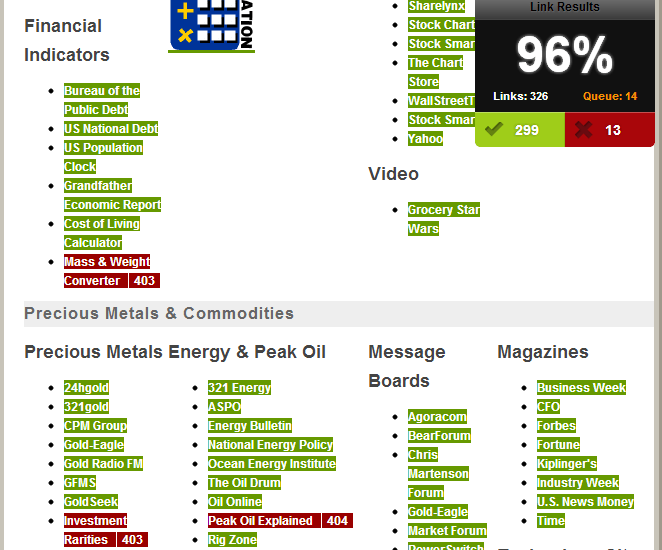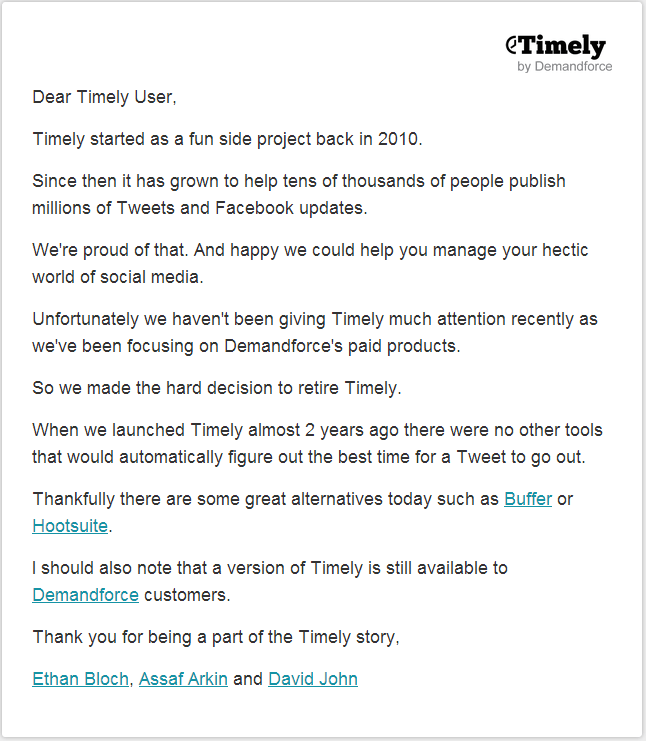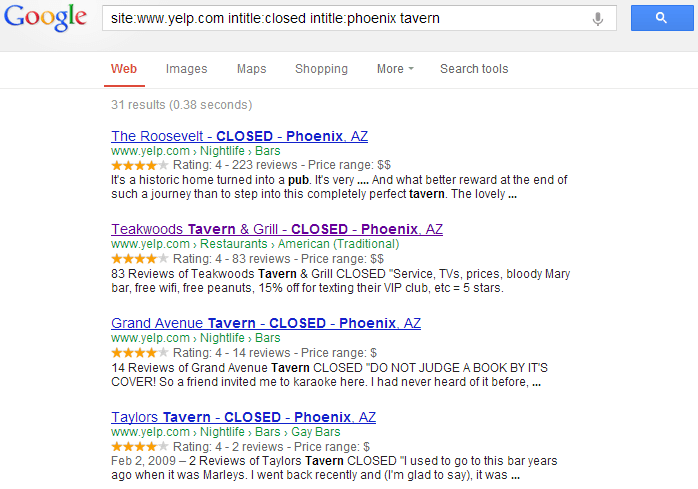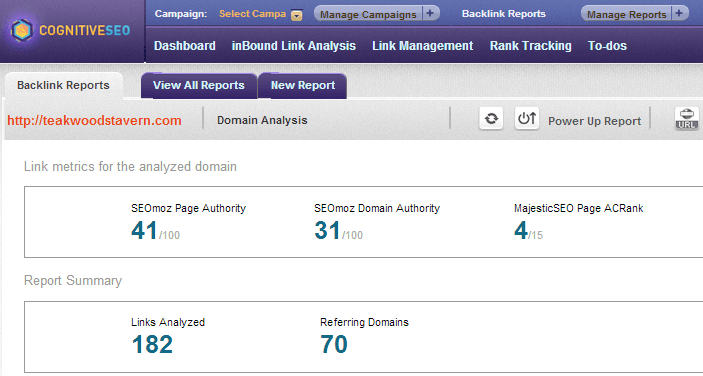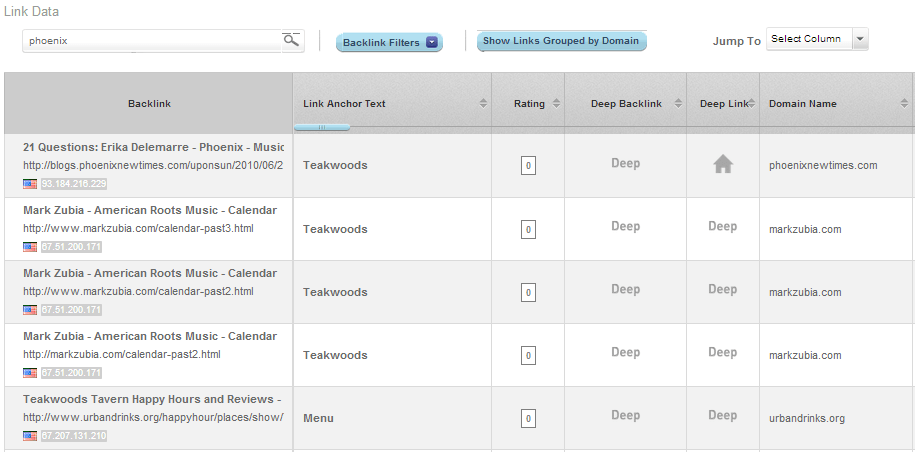I recently had the pleasure of interviewing
Neil Patel, founder of
KISSMetrics.
We discussed SEO link building best practices, misconceptions, and
future insights for 2013 and beyond. Below is the transcript of the
interview.
Jayson DeMers: What’s up, guys? My name is Jayson DeMers. Today I am here with Neil Patel, the founder and CEO KISSMetrics.com, as well as
QuickSprout.
Neil Patel is an expert at SEO link building and especially
post-Penguin SEO link building, and so that’s gonna be the topic of our
discussion today.
Let’s go ahead and dive right in. Neil, thanks for taking the time to chat with me today.
Neil Patel: No problem. Thank you for having me.
JD: My first question for you is, SEO link builders
know that, really, the four elements of links are quantity, quality,
diversity, and velocity. Can you speak briefly about how to define an
ideal measurement for each of these in any given niche?
NP: So the way I look at it is, you take all those
elements and you figure out what the ideal mix is. And most cases, no
matter what industry, I’m a big believer it’s better to get quality over
quantity. Sure, if you want to rank for “credit cards”, “online poker”
or whatever it may be, you’re gonna need some sort of quality, I mean
quantity, but most people don’t realize, SEO 10 years ago, if you threw
out tons of quantity links, you get high rankings.
These days, if a competitor has a thousand or ten thousand or hundred
thousand links and you merely have a hundred, you can still outrank
them if your quality is better, and you’re growing organically over
time. So, the velocity is much slower instead of getting a thousand
links every single day or every few weeks or. It’s like get a handful of
links if you’re trying to rank for “dog food”, your best link, quality
wise, is someone who already ranks for “dog food” in the top thousand,
if not top hundred. Find out those pages, hit them up, try to get a
link, right?
And on top of that, you want to make sure the anchor text is
diversified. You don’t want to just have “dog food” as all of them,
because if it’s all “dog food”, it’s not natural. It needs to be rotated
up, have multiple keywords in there, look as natural as possible from
the domain name, to the title tag of the page, or the keyword, other
various keywords that are related to that main keyword, so forth and so
on.
But those are the main ways that I would build links. Slow and steady
wins the race. Go for quality and don’t go for speed, right? And don’t
try to go out there and buy thousands of links or you don’t even need to
buy any links. If you just write really good content, pretty good
product or service, you can get rankings more quickly and better than
most people out there who are spending thousands of dollars a day on
link buys.
JD: Understood. You talked a little bit about anchor
text. I think that the anchor text distribution that used to be a best
practice pre-Penguin has changed completely post-Penguin. Would you
agree, and what would you say, how has it changed?
NP: Yeah, a lot of time, pre-Penguin, a lot of
people do rich anchor texts and too much rich anchor texts was like 50,
60 percent of the keywords were exact match, but that just doesn’t work
as well today. And the funny thing is that I haven’t been hit by Penguin
updates, but I never tried to build links which they are all rich.
Never tried to go out to build links and say, “Hey! Give me a hundred
links with those keywords.” Just more so natural, write great content,
get a lot of links and with link building, though, just get links in one
page, get it to your whole site, which is what’s natural if you write a
lot of good content, with pretty a good product or service. Plus, the
anchor text? Yeah, ideally you should, you don’t need to have a more
rich anchor text than 10, 20 percent max.
Don’t try to go for 50, 80 percent. Just go out there, make it look
natural, write good information and that starts building links
naturally.
JD: Continuing along the lines of anchor text. What
would you say, how’s the value of it changed? Clearly, pre-Penguin, rich
or exact match anchor texts carry a lot of value. That’s why it’s so
popular to use. But now, obviously you have to watch the amount of exact
match that you use. But it still has some value, and would you say that
that value makes it worth using to some extent, or would you stay away
from using exact match because it can trigger the new Penguin algorithm.
NP: Exact match domains or exact anchor texts?
JD: Exact match anchor texts.
NP: You can use it to some extent.
JD: To some extent, so…
NP: It’s hard to avoid. You do need some exact match
in there and I think it will help boost rankings, but you don’t need a
ton of it, right? Well, before you may have needed 30, 40 percent, that
what at least some people used. I’ve always been a big believer that
your exact match should be 20 percent or less. Sometimes it’s hard to
avoid if it’s your domain name is the name of the keyword you’re trying
to rank for, then you’re going to get a ton of exact match links.
For example, my personal site is NeilPatel.com, I don’t rank a ton
because I have so many links coming in that say “Neil Patel”. And that’s
fine. Over Google’s updates they’ll fix it and I’ll naturally go on top
because if you look the course of the history, it says that it should
do well, tend to naturally do well over time, right? Because algorithms
aren’t perfect, they’re made by humans, but they are doing a darn good
job of weeding out all the trash.
But be careful. Don’t go out there and use too many exact match, but
you still have to use exact match to some extent, it’s like I’ll never
rank for “Neil Patel” if links coming into me don’t say that keyword.
Even a small percent or at least that page is linking to me, need to
have that keyword somewhere on that page.
JD: One of the tactics I think that is safe to use,
maybe you’ll disagree with me, post-Penguin is guest blog posting. And
when when guest blog posting is done, there’s commonly a resource box or
an author bio at the end of the blog post. So, when you’re doing guest
blog posting, how does the value of an in-content link differ from a
link that’s in the author bio of the resource box?
NP: First of all, when you do a lot of guest posts,
and you have your author bio and it’s the same thing over and over
again, I’ve actually found that those links will boost your rankings a
bit, but after a while, it starts going down or staying flat, and the
reason being is it’s very rich, because whatever your author bio is, if
you write 20 guest blog post on that same website, you have 20 links
with same anchor text.
In-content is still the best type of links, but the key is when
you’re doing guest author links, post-Penguin and Panda and all those
updates, it’s not necessarily about, “Hey, here’s bio links.”
A lot of people would just say, “Hey, I’ve got a buddy at Business
Insider and he’s gonna give me a guest account. I’m gonna write a shit
blog post and get a link. And that’s a promise, not just the domain name
that you’re getting a guest blog post from, but how good is the
content, because if the content is good the social signals will go up
because you get more tweets, Facebook shares, likes, so forth and so on.
And then those pages tend to do better organically, get more visitors,
more people naturally linking to them, and then the links from there
will be better when they come into your site.
But, I’m a big believer of trying to get in-content links over author
bio links. A few author bio links aren’t bad, but when you start
getting 10, 20, 30 author bio links from the same website, and it’s the
same bio on each and every page, that starts de-valuing yourself
drastically and you’ll notice your ranking either flatlining or actually
going down.
JD: On that note, on getting links from multiple
domains, how many domains would you recommend to get from a single
domain before you start seeing diminished returns?
NP: Hard to say, but they always say the first one
has the most weight, right, assuming it’s from a good authoritative
page. And as you get more and more of it diminishes, I really feel you
don’t need more than two or three. I actually personally just go for one
link per website. If it’s a good opportunity, like if I can continue to
get links from Business Insider, I don’t care if it provides SEO value
or not, and that’s why I think most webmasters should look at it, at the
end of the day, if the site’s really powerful, and you write great
quality content, and it’s gonna drive visitors over to you, and those
visitors will convert into leads, paying customers, whatever your
conversion source may be, who cares, right? Don’t go for a link just for
SEO value. There’s more benefits to it than just that.
So, if you’re going for a strictly SEO value, focus on getting one
link per domain name first, you know per site. So, if you have one site
yourself, just get one link per site per, I guess, one guest blogging
opportunity. But if you see that there’s value in these sites that you
do blog post from, get as many as possible, because if they can keep on
driving visitors to you, who cares?
For example, a guest blog post on Search Engine Journal and SEOMoz
multiple times. I don’t care for, you know, hey, if I get a link from
SEOMoz and Search Engine Journal, it’s gonna boost my rankings. I’d more
so care for, hey, these sites have relevant audiences to what products
I’m gonna sell, if I write great information, they’re gonna start
trusting me and my company, and those visitors are gonna come into my
website and convert sooner or later.
JD: Now, to switch gears a little bit. I’ve been
told that some of the old style link building tactics such as article
directories syndication, web 2.0 profiles and blog posting, has lost a
lot of its value for tier one of building, which is link building
essentially that goes to your money site or to your client’s site or
your own website, but as for a tier two tactic, I’ve heard there has a
lot of value. Have you seen any evidence of that?
NP: I have seen companies building links to their
sites from authority sites, then taking links from tier two – the
article submission directories, web 2.0 profiles and linking those to
their Business Insider article. The problem I really see is you can’t go
out there and do that. It’s not just a long-term play. Sooner or later,
they’d devalue those links coming in to your site. They’re going to
devalue them going to tier two sites, right, the sites that are linking
to you, so I’m a big believer that you should just avoid them
altogether. They’re crappy links, just a waste of time and they’re not
put much value in the long run.
JD: What would you say is the value of links from social media sites like Twitter, Facebook, LinkedIn, Google+, YouTube, Pinterest?
NP: I think they’re great, and especially if they’re
going into your internal pages. Search engines are using social
signals. It’s all gonna all help boost rankings. Actually, I noticed one
trend if you get a lot of shares, tweets, likes in a really short
period of time, like five hours, 10 hours, you’ll notice your rankings
will really climb to the top and then they’ll go all the way back down,
but you’ll be in a much better place than if you never got those social
shares, likes or anything like that. So the more you can get the better
off you are.
JD: OK. Got it. What are some common mistakes that
you see link builders making time and time again in a post-Penguin link
building era.
NP: The big mistakes that I keep on seeing is they
go for rich anchor texts they don’t put in the time and emphasis to get
the link. If someone has the opportunity to get a link from Huffington
Post, they just get out there, pop in a link right at top, make it rich
in anchor texts and call it a day and write some gibberish content. It’s
like, that’s not a great link, and yes, from Huffington Post, but go
out there, write a great piece of content on Huffington Post. Sure if
it’s relevant to link to your site, but by doing that, that article is
then gonna get way more social shares, and I think that link’s gonna
have way more value than if didn’t have social shares.
JD: OK. So, what are some commonly perpetuated myths
that you see about SEO link building in today’s post-Penguin link
building world?
NP: The biggest myth I have seen is see a lot of
links to rank, and a good example of this, people for the term “forex”
are building hundreds and thousands of links. I had a buddy who popped
up a site, in less than two months, he’s ranking in the top two pages
for the keyword “forex”. He sold it, said he doesn’t want it anymore.
And he did it all with just a handful of links. He went and found sites
that rank in the top thousand for the keyword “forex”, and asked them
for a link and he just linked back. It worked out really well, he put a
cool site with a cool product, tons of free information. No ads. Killed
it.
So you don’t need a ton of links. Don’t go for quantity. Go for
quality. And keep in mind, obviously he didn’t start with brand new
site. His site didn’t have much on it, but the domain name is pretty
old.
JD: So in terms of buying a domain name or getting
an aged domain is not easy. Did your buddy buy it on auction or own it
for a long time?
NP: On auction. And the key is he did not just buy
an old domain name, he bought an old domain that had an old junk site on
it, and had a few links, so that way it wasn’t an old domain with
nothing on it.
JD: In your opinion what does the future of SEO link
building look like? And I’m talking about one to two or maybe five
years from now. What does it look like? How is it different from link
building of today?
NP: I think there’s gonna be a lot more social
signals. So think of it this way; pre-Twitter, and many of these social
sites, when someone will link to you, they’ll write a blog post. And
they would say, or bring into their website, “Hey, check out blah, blah,
blah.” Now, a lot less people will go out, and they use social profiles
to share whatever information they want to share.
So, I think you have an awesome article on AudienceBloom, right,
which is your site, I would go out there, and now, instead of blogging
on it, it’s much easier for me to just tweet about it, which is still as
effective, right? Of course a link from a website has more weight than a
tweet, but it’s still better than nothing, and it’s still pretty
effective to get a lot of tweets.
So I think it’s what’s gonna happen in the next three to five years
is they’re gonna put much more weight on social links, because less
people are enticed to link from their blog due to the high usage of
social sites and it’s much easier than to start a website. And keep in
mind, one thing that you’ll see within this three to five year period is
search engines valuating these social profiles and who links, and which
social profiles carried more weight, and the reason being is it’s very
easy to get a ton of people to tweet out a link, and the last thing they
wanna do is count, “Hey, you got 5,000 tweets.” This must be good when
you bought 3,000 of them and they are shitty tweets from user profiles
that don’t have too many followers or don’t tweet much at all.
JD: If you had one piece of actionable advice, what would that golden nugget of advice be?
NP: The golden nugget would be get a lot of press.
And the reason being pre-Penguin and post-Penguin, the one thing that
I’ve always seen is if you build a good product or service, solve a
problem and make that solution very easy and affordable, that usually
tends to increase your odds of getting press. And if you can get a lot
of press, you tend to rank better.
If you look today at companies that are on TechCrunch, and Mashable
and all these social sites, they get a ton of these big sites come out
all at once and they do in a natural fashion they tend to rank pretty
well. Whether they get a, you know, for a specific feature set or fund
raising or for whatever it may be, press helps pre-Penguin and Panda and
post it right, like, I’ve seen press helps get better ranking at a much
quicker pace.
JD: Well thank so much for your time today, Neil.
NP: Thank you for having me.
Key Takeaways
- New-age link building is all about quality, not quantity. Spend the
time to produce superb content and get it published on strong, authority
publishers.
- Diversify your anchor text; use no more than 10-20% exact-match anchor text.
- Diversify the locations from which you get links.
- In-content links are stronger than links from author bios.
- The value of links from social media sites is worthwhile, especially if they're going to your internal pages.
- Get media exposure for your product or service, and that will naturally turn into strong inbound links.






